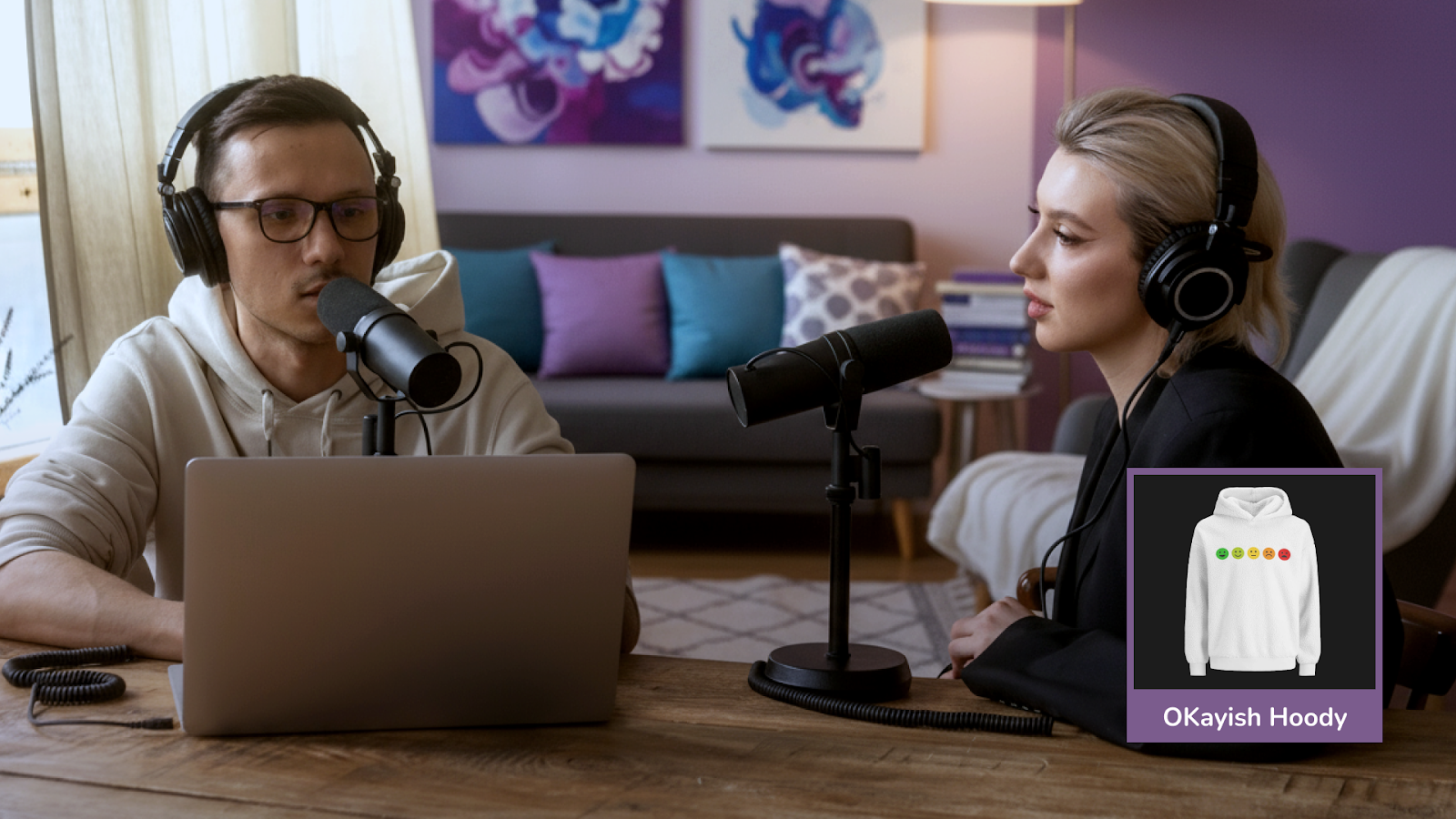Sign up for uno
Language

Live podcasts are dynamic, spontaneous, and offer real time engagement and feedback from viewers. Yet, the same magic that makes them feel authentic and unedited is a double-edged sword. When you’re live streaming, you can’t cut out awkward silences in post-production and you’re faced with the challenge of avoiding dead air.
Natural pauses are part and parcel of live podcasts, but long, awkward silences that go on for more than 3 seconds can feel intensely uncomfortable. They’re disruptive and leave viewers bored and likely to get distracted by other things.
Dead air can be caused by technical issues, poor planning and preparation, or just the natural wrapping up of a topic mid-conversation.
Though it’s impossible to avoid dead air completely, there are some things you can do to keep things from grinding to a halt.

Choose topics that you’re familiar with. Tell old stories you’ve told several times over, or share hyper-obsessions that you’ve already bored your friends to death with. Doing this means you’ll be comfortable exploring the topic and less likely to run out of things to say, even when you’re anxious.
Place a time limit on your live streams that feels almost too short to cover everything you want to talk about. If you can speak about something for two hours, limit your streams to one hour. That way you have to keep things concise, rather than trying to stretch a topic to fill space.
Adrenaline can cause you to speak a lot faster than you realize, and it can come at the expense of speaking clearly. If you’re feeling nervous, take a deep breath and take your time! Talking slowly isn’t a bad thing. It allows your brain to catch up with your mouth.
A public speaking hack to avoid awkward silences, ‘ums’, or ‘likes’ is to put together an arsenal of filler phrases that sound smooth and professional. Practice using phrases that help you transition to new topics or buy time. For example, you could say, “Now let’s focus on…” or “Another thing I wanted to talk about today is…”
Prepare talking points, notes, and questions before starting each live podcast session to keep yourself on track. You can also display your main talking points onscreen so your viewers know what you’ll be covering. Onscreen talking points also tend to spark engagement and questions in chats.

Talking to another person is a lot easier than talking to a camera, and inviting a guest or adding a co-host can also help fill silent moments. If you’re interviewing a guest streamer, use open-ended questions and active listening to encourage dialogue.
Your live podcast doesn’t have to just be you and your guest sitting at a table and talking. Adding an activity can be fun for both you and your viewers alike, and act as an icebreaker for guests on your show. A lot of interviewers use this tactic to keep things fun – think of Hot Ones or BuzzFeed Celeb’s puppy interviews. (You can even share how fast your pulse is racing on screen with a Pulsoid overlay.)
One of the main benefits of streaming is the opportunity you get to interact with your audience in real time. Responding to your chat messages as you stream is a great way to eliminate pauses. You can even invite your viewers to submit questions for guests and co-hosts, which helps take the pressure off your shoulders to keep things fresh.
The more you get used to live streaming, the less likely you are to feel awkward or lapse into silence. Time and experience teach you how to plan for mistakes, and how to improvise your way out of tough spots. If you’re just starting out, it’s always good to go through your live podcasting checklist, do a dry run, and practice talking to a camera or even in your voice notes app.

Even the smoothest talkers can be tripped up by malfunctioning mics, lagging internet speed, and glitchy software. Make sure you have backups, spare mics, extra batteries, and a good BRB screen to display when you need to cut the live video feed and fix something. Don’t panic if things go wrong, though. Your subscribers and viewers are likely to forgive hiccups on a live stream.
Avoid dead air and spice up your live podcast with engaging streaming overlays. With overlays.uno, you can add lower thirds, tickers, talking points, and much more, without relying on ZIP files or complicated software. Sign up for free today and start adding overlays to your next live podcast!